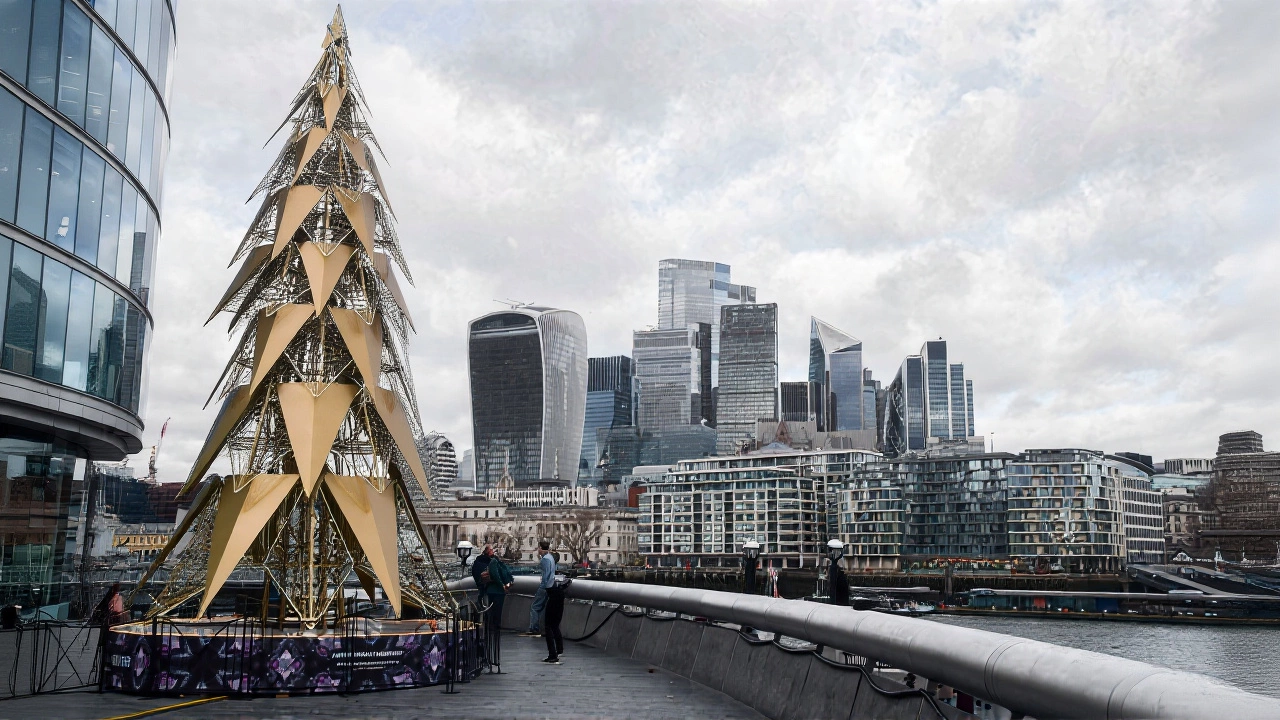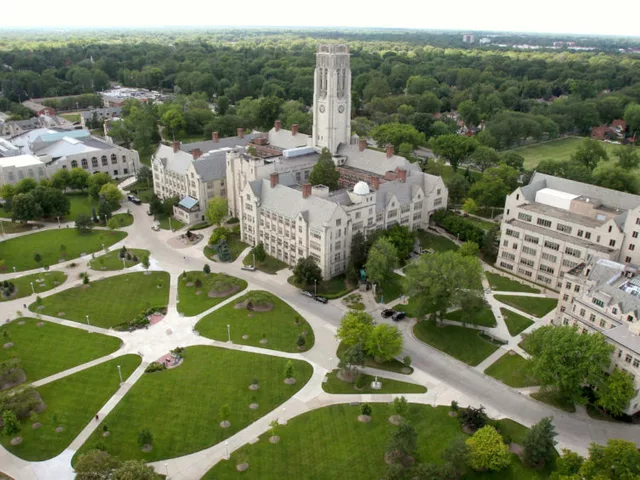Christmas 2025 won’t look the same across the U.S. — one family might be shoveling snow outside their front porch in Vermont, while another in Texas sips cocoa in shorts under a 70-degree sky. According to the Old Farmer's Almanac and the NOAA Climate Prediction Center, this winter’s weather will split the country like a holiday pie — rich and snowy in the north, dry and mild in the south. The forecast, released in late November 2025, paints a picture of stark contrasts that could reshape holiday travel, school closures, and even how people decorate their yards.
La Niña’s Shadow Over the Winter Season
The driving force behind this split? La Niña, the cooler phase of the El Niño-Southern Oscillation (ENSO), which has been in place since September 2025 and is expected to linger through February. NOAA’s latest report gives a 61% chance that La Niña will transition to neutral conditions between January and March 2026 — meaning the cold, wet pattern in the north could hold strong through Christmas and beyond.
That means the Pacific Northwest, northern Rockies, Great Lakes, and Ohio Valley are bracing for above-average precipitation — much of it snow. In contrast, the southern tier — from Southern California through Texas, the Southeast, and coastal Mid-Atlantic — is projected to be drier and warmer than normal. Temperatures there could run 3 to 5 degrees above average, making snowless Christmases the norm rather than the exception.
Where the Snow Will Fall — and Where It Won’t
The Old Farmer's Almanac doesn’t just echo NOAA — it adds flavor. Its 2025-2026 forecast warns of "dramatic swings and widespread wintry weather," with New England likely seeing frequent snowstorms that could pile up 20 to 30 inches before December 25. Bostonians might need their sleds before the tree lights go up.
Along the Atlantic Coast, it’s a mixed bag: rain, sleet, and snow will dance in and out of the forecast, especially in Philadelphia and Baltimore. The Mid-Atlantic mountains — think the Poconos and Alleghenies — could get hit with heavy snow, while lowland cities get slush.
Meanwhile, the Great Lakes are primed for lake-effect snow. Buffalo, Erie, and Marquette could see multiple white-out events, especially if cold air sweeps across unfrozen lake waters. Ski resorts in Utah, Colorado, and Wyoming are already celebrating — early snowfall in October has built a solid base, and January storms could deliver record powder.
But down south? Don’t pack your boots just yet. Texas and the Southern Plains are expected to see more rain than snow — and even when temperatures dip, it’s likely to be freezing rain or sleet, not fluffy flakes. The Appalachian highlands might get a dusting, but Atlanta, Orlando, and Charleston? Probably no white Christmas.

Travel, Events, and the Hidden Costs
This isn’t just about sledding or snow angels. The weather split has real economic teeth. Airlines are already adjusting staffing for potential delays in the Midwest and Northeast. Road departments in Minnesota and Maine are ordering extra salt and plow blades. Meanwhile, in Arizona and Florida, resorts are promoting "Christmas in the Sun" packages — a growing trend as warmer winters become more common.
"We’ve seen a 22% increase in winter travel bookings to southern destinations since August," said a spokesperson for the American Travel Association. "People aren’t just escaping cold — they’re escaping uncertainty. A snowy Christmas is no longer a guarantee anywhere, even up north."
Climate Context: A New Normal?
It’s worth noting that the U.S. has been warming steadily since the early 1900s. The Environmental Protection Agency and NOAA both confirm this long-term trend. What we’re seeing in 2025 isn’t just a La Niña quirk — it’s a pattern amplified by climate change. Warmer oceans mean more moisture in the air, which fuels storms in the north. But it also means the south stays warmer, reducing snowfall potential even when cold air arrives.
"Long-range predictions never capture every detail," said NOAA’s lead forecaster in their public briefing. "But what remains certain is the mix of winter drama and gentle calm that will shape gatherings across the country."

What’s Next?
The next major update from NOAA comes in mid-December, when they’ll refine their outlook based on actual snowpack and atmospheric patterns. Meanwhile, the Old Farmer's Almanac will stick to its traditional methods — sunspots, lunar cycles, and old farmer lore — even as climate science evolves.
For now, families are planning accordingly. In Minneapolis, they’re stocking up on salt and warm coats. In Phoenix, they’re ordering palm tree lights. One thing’s clear: Christmas 2025 won’t be the same for everyone — and that’s the new normal.
Frequently Asked Questions
How will this winter affect holiday travel plans?
Travelers heading to northern states like Minnesota, Maine, or Vermont should expect delays from snowstorms and icy roads — especially around Christmas Eve. Airlines are already flagging potential disruptions in the Great Lakes and Northeast. Meanwhile, destinations like Florida, Texas, and Arizona are seeing a surge in bookings, with many families opting for warm-weather holidays. The National Weather Service warns that freezing rain in the Mid-Atlantic could cause dangerous conditions for drivers between Philadelphia and Washington, D.C.
Why is La Niña making the South warmer and drier?
La Niña shifts the jet stream northward, pushing storm systems toward Canada and the northern U.S. This leaves the southern states under a ridge of high pressure, which blocks cold air and precipitation. The result? Fewer storms, less snow, and above-average temperatures — a pattern that’s repeated in most strong La Niña winters since the 1950s. This year’s 61% likelihood of La Niña persisting through February makes this outcome highly probable.
Can the Old Farmer's Almanac be trusted compared to NOAA?
NOAA uses real-time satellite data, ocean temperatures, and supercomputer models — making it the gold standard for accuracy. The Old Farmer's Almanac relies on historical patterns, solar activity, and folklore — and while its long-range forecasts often align with broad trends, they’re not precise. Think of it as a poetic outline, not a weather app. For critical planning, NOAA’s data is the one to follow.
Will there be snow on Christmas Day in New York City?
It’s possible, but not guaranteed. The Mid-Atlantic is expected to see mixed precipitation — rain, sleet, and snow — with the heaviest snow likely in the higher elevations west of the city. NYC itself, with its urban heat island effect, often sees rain or slush on Christmas Day even in snowy winters. Historical data shows only 3 snowfalls on Christmas Day in the past 50 years. Don’t count on a white Christmas, but keep an eye on the forecast after December 15.
How does this winter compare to previous La Niña years?
The 2025-2026 winter resembles 2020-2021 and 2017-2018, both strong La Niña years with heavy snow in the Northeast and Pacific Northwest, and unusually warm conditions across the South. In 2021, Chicago recorded 42 inches of snow in December alone, while Miami saw its warmest December on record. This year’s forecast is similar, though the Pacific Northwest may see even more rain due to stronger storm tracks. Climate change is making these extremes more pronounced — cold snaps are sharper, and warm spells are longer.
What’s the risk of power outages this winter?
The greatest risk lies in the Ohio Valley and Great Lakes, where ice storms could coat power lines. Freezing rain, not snow, is the real grid killer — and it’s expected in parts of Pennsylvania, Ohio, and western New York. Utility companies in those areas are already reinforcing poles and deploying mobile crews. In the South, where infrastructure isn’t built for ice, even a half-inch of freezing rain can cause widespread outages — a lesson learned from the 2021 Texas blackout.











